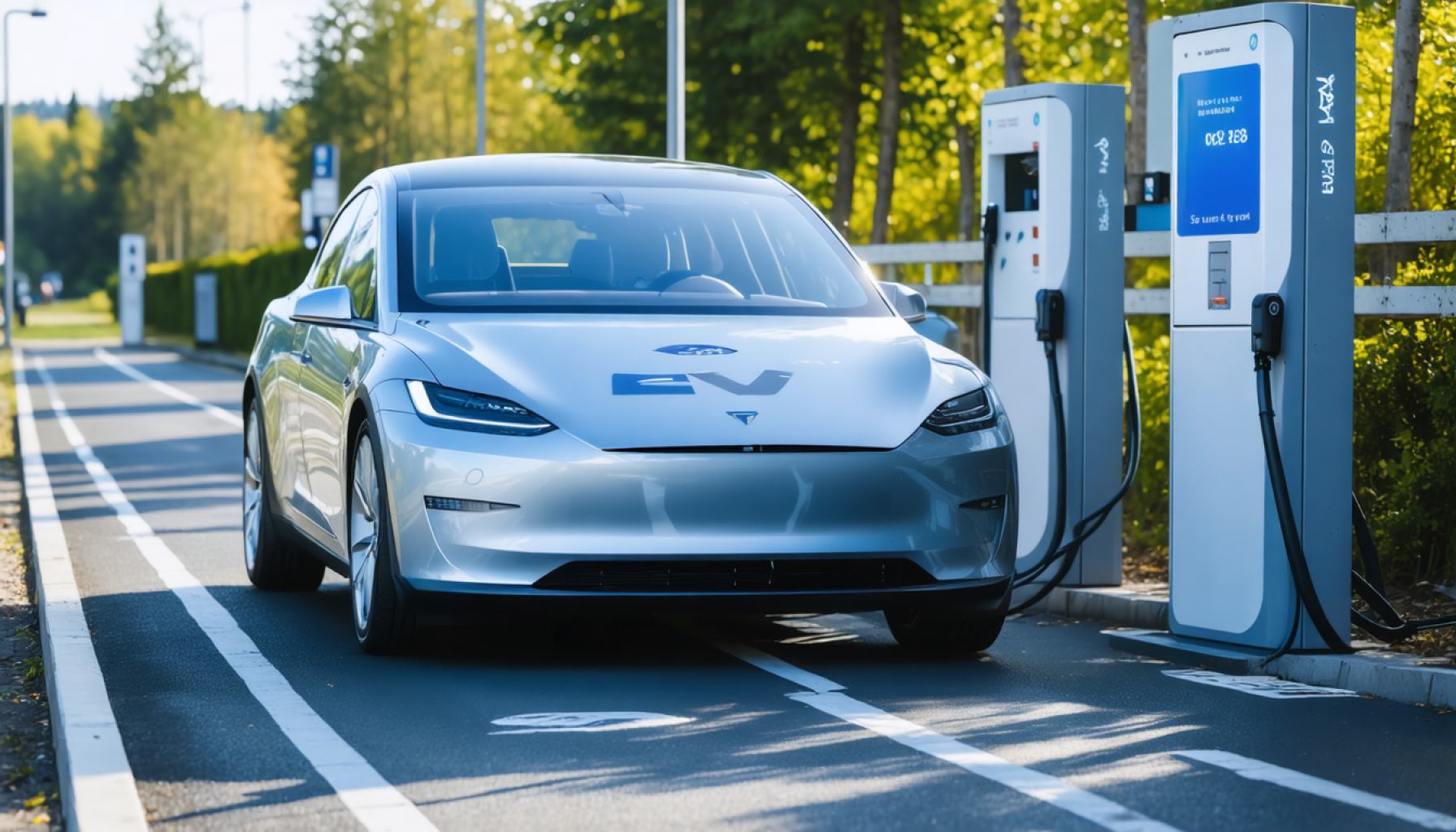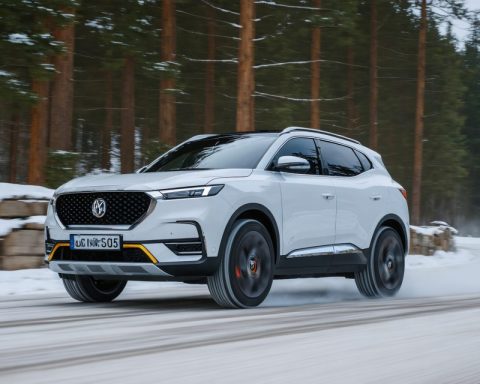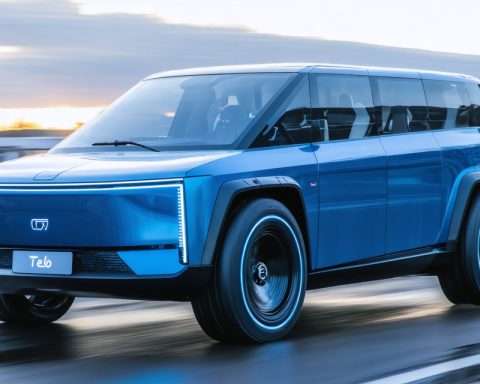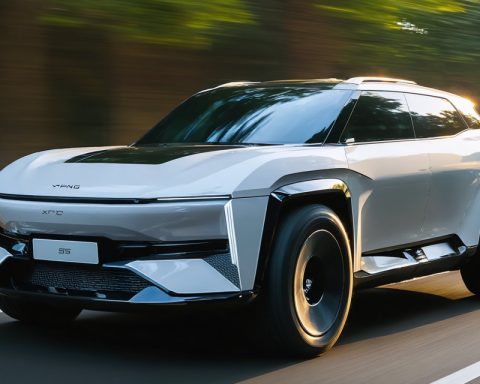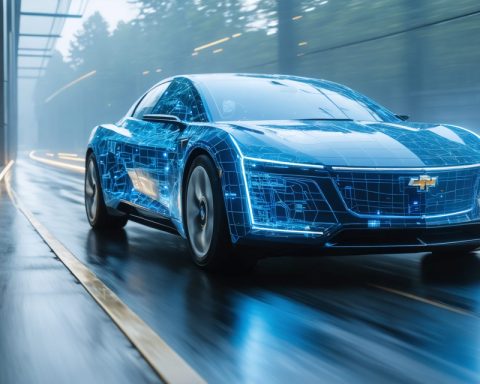- The EU aims for a 100% electric vehicle (EV) market by 2035, facing challenges from automakers and political forces.
- Chinese carmakers, like BYD, offer affordable EVs, but these may not drive Europe’s mass-market shift.
- Germany and Italy advocate for “technological neutrality,” promoting a mix of EVs, e-fuels, and hybrids.
- Industry analysts predict a 50% EV market share by 2035, below the EU’s target, while environmental groups push for zero-emissions goals.
- There is uncertainty over consumer interest in low-cost EVs, with preferences for comfort and elegance prevailing.
- Potential partnerships between European and Chinese automakers could reshape the industry, ensuring a sustainable future.
- Flexibility and innovation are crucial for the EU’s automotive sector to meet its goals effectively.
From Germany’s scenic autobahns to Italy’s bustling city streets, the European Union is steering towards an electrifying future. Yet, its ambitious journey to mandate a 100% electric vehicle (EV) market by 2035 is fraught with precarious curves and imposing hills. As the clock ticks, the road less traveled is being tested.
With Europe’s standard-bearing automakers in a predicament, Chinese carmakers are racing ahead with lightning speed. Vehicles like BYD’s Surf, a compact yet mighty electric hatchback, promise affordability with an anticipated European price of about €15,000 ($16,200). Despite Surf’s sleek promise, experts are skeptical that Europe can transform these low-cost offerings into a mass-market shift that meets the bold sales targets.
Beneath the surface, political forces are brewing conflict. Powerful EU nations, like Germany and Italy, are urging Brussels to embrace “technological neutrality”. They envision a broader spectrum of clean technologies, where alternatives like e-fuels and hybrids coexist with electric stalwarts. Meanwhile, the EU Commission’s zero-emissions target mandates an evolution exclusively towards EVs.
Naysayers predict a fierce collision ahead. Analysts, like those at Jefferies, starkly adjust their projections, earmarking a 50% EV market share by 2035, far from the EU’s formidable goal. In stark contrast, environmental voices from groups like Transport & Environment battle for uncompromised adherence to these pivotal targets.
And as the sun rises over new models, hopes for sub-€10,000 vehicles flicker dimly in the shadows of current consumer tastes. Europe’s car buyers, it seems, covet comfort and elegance—traits not easily married with ultracheap electrics.
Amidst the debate, there remains a constant whisper: are automakers setting their sights on the wrong target? Will European giants partner with their Chinese rivals? Partnerships seem inevitable if the continent wishes to redefine its automotive destiny while retaining a piece of the multibillion-dollar pie.
Though the journey towards 2035 may feel uphill, the key takeaway is clear: flexibility might be the true engine that propels the EU’s automotive arena into a sustainable future. The EU must adapt, perhaps setting its course by the stars rather than rigid roadmaps, to ensure that along with cost and compliance, innovation drives Europe’s pivotal chapter.
Will Europe’s Electric Vehicle Revolution Hit a Roadblock?
Unraveling the EU’s Electrifying Ambitions
The European Union’s ambitious plan to transition entirely to electric vehicles by 2035 is stirring excitement and skepticism alike. As automakers and politicians navigate this transformative period, several underexplored facts deserve attention.
Market Dynamics and Trends
1. China’s Electric Invasion: Chinese manufacturers, like BYD, are leading the charge with affordable models such as the Surf. Yet, the skepticism surrounding whether Europe can adopt these models at scale is grounded in cultural and market dynamics. European consumers lean towards comfort and innovation, which might make the adoption of low-cost electric vehicles challenging without significant adaptation.
2. Price Forecast: Although current models like the Surf are priced at approximately €15,000, experts believe economies of scale and technological advancements could drive prices down. This is essential as price parity with internal combustion vehicles is a significant factor for mass adoption.
3. Consumer Preferences: Despite hopes for sub-€10,000 EVs, European consumers’ preference for comfort and innovation over austerity remains a hurdle. Bridging this gap requires integrating advanced features in budget-friendly models.
The Political Landscape
1. Technological Neutrality: Germany and Italy advocate for “technological neutrality,” emphasizing the coexistence of various innovations such as e-fuels and hybrids alongside electric vehicles. This flexibility could prevent industry disruptions while meeting environmental goals.
2. Environmental Lobby: Groups like Transport & Environment push for strict adherence to the 2035 target, emphasizing its importance in reducing emissions and mitigating climate impacts. Their influence continues to shape EU policies, even as pragmatism calls for broader technology adoption.
Real-World Use Cases & Predictions
1. Partnership Potential: The possibility of partnerships between European giants and Chinese firms is on the horizon. Such collaborations could ease technology transfer, streamline production costs, and bolster innovations in the EV sector.
2. Charging Infrastructure: The adoption of EVs hinges significantly on the development of comprehensive charging networks. Investments from both public and private sectors are essential to scale infrastructure across urban and rural landscapes in Europe.
3. Energy Transition: The move towards EVs is closely tied to the broader energy transition to renewables. As nations enhance their energy mix, the benefits of EVs increase, providing cleaner and more sustainable transportation.
Controversies & Limitations
1. Infrastructure Strain: The existing grid systems in some regions may struggle to support a full fleet of EVs without significant upgrades, raising concerns about reliability and costs.
2. Battery Supply Chains: Europe faces a critical task in securing battery supply chains, with sustainability and ethical sourcing of materials being key challenges. Companies need to focus on recycling technologies and alternative sourcing strategies.
Actionable Recommendations & Quick Tips
– Incentives: Both governments and manufacturers should bolster incentives for EV purchases, including rebates and tax deductions, to bridge the cost gap with traditional vehicles.
– Consumer Education: Enhance efforts to educate consumers about the total cost of ownership savings and environmental impact benefits that come with EVs, easing the transition.
– Infrastructure Investment: Prioritize investments in robust charging networks, ensuring accessibility and reliability to encourage consumer confidence.
– Collaboration: Encourage partnerships and alliances across the automotive industry to foster innovation and leverage shared resources.
Related Links
For further insights into the EU’s transportation shift, visit the main domain of European Commission which regularly updates on policy changes and targets regarding emissions and vehicle standards.
Navigating Europe’s transition to a fully electric vehicular network is intricate, but with strategic partnerships and infrastructure growth, it remains a tangible horizon. Emphasizing innovation, technological diversity, and consumer-focused solutions will be key to unlocking a sustainable future.
